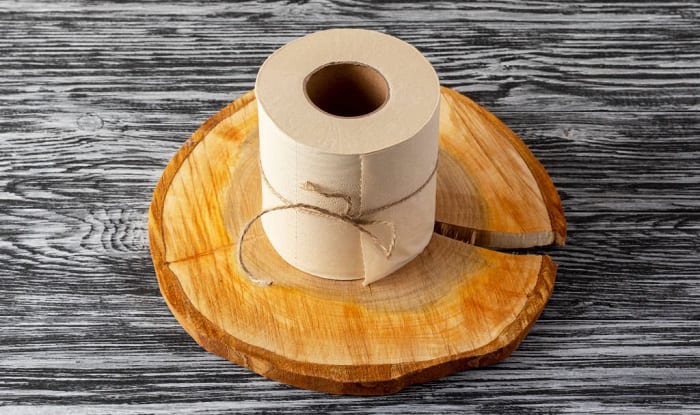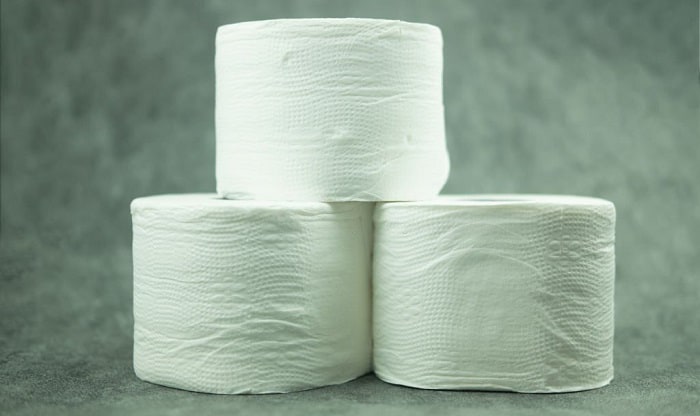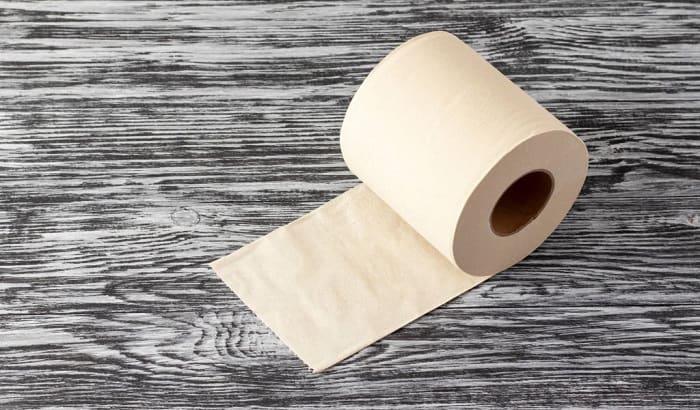Toilet paper mainly comes from trees. This fact raises an environmental concern, recognized by the Natural Resources Defense Council. Trees contribute a lot to the welfare of the environment. Their number decreases because of the high demand for toilet paper in North America. For the preservation of trees, there’s a debate about bamboo vs recycled toilet paper as better options.
This is done to find more sustainable toilet paper. I’m sure you’re curious to know the winner of recycled toilet paper vs bamboo toilet paper. To find out, spare some time to read this whole article.
Table of Contents
How to Identify That the Toilet Paper Promotes Forest Protection
Toilet paper manufacturers should show environmental certifications to prove that they’re responsible in sourcing their products. The tick tree logo from Forest Stewardship Council is widely known in the paper industry. It represents the gold standard of providing social, economic, and environmental benefits.
Another proof that a manufacturer can present is a certificate from the Sustainable Forestry Initiative. However, it’s not as stringent as the Forest Stewardship Council in confirming eco-friendly toilet paper.
Bleaching on Toilet Paper
Bleaching is one step of the toilet paper production process. It is for the paper’s white appearance and softness. However, it includes elemental chlorine, which is an unsafe chemical that gives off dioxin. Dioxin is so toxic that it can harm a human’s reproductive and immune systems. It can also lead to cancer.
NRDC has prohibited this elemental chlorine in toilet paper production. But still, you have to watch out for toilet paper brands labeled ‘elemental chlorine-free’. They don’t disregard the bleaching process at all.
The mark ‘processed chlorine-free’ is more reliable. This means that it applies a less toxic method. Among them, the ultimate proof of safety is ‘totally chlorine-free’.
Everything About Bamboo Toilet Paper
Caboo Tree-Free Bamboo Toilet Paper and Betterway Bamboo Toilet Paper are the best examples of bamboo toilet paper. Caboo is a two-ply toilet paper and it’s free of any harmful chemicals. It’s even verified as non-GMO. Betterway is a 3-ply version with safe formulation for sensitive skin. It’s all natural and FSC certified.
The production of this toilet paper starts with chipping bamboos into tiny pieces to turn them into pulps. These pulps are processed with water and heat. The paper is whitened by adding hydrogen peroxide so bleaching and harmful chemicals are not included. Then, the following steps are similar to recycled and virgin toilet paper.
1. Positive side
- Sustainability
Bamboo toilet paper brings environmental advantages. Compared to trees, bamboos are more sustainable as they grow faster. Since they grow from roots, you don’t need to replant. Just so you know, bamboos are great at fighting deforestation.
Bamboos deliver 35% more oxygen than trees. Therefore, they’re a magnificent oxygen provider! Additionally, they can absorb 12 tons of CO2 per hectare yearly.
- Creates excellent ply
You can’t underestimate the strength of bamboo toilet paper as it has higher tensile endurance than steel. Hence, it won’t be easily frayed. Despite its toughness, it won’t create issues in your plumbing system after flushing. This paper dissolves quickly in water.
- Safety
The conventional way of treating toilet paper is bleaching. Fortunately, bamboo toilet paper is made with fewer and safer chemicals. It’s free of BPA and chlorine. No dyes, scents, or pesticides are added.
2. The downside
- Not entirely eco-toilet paper
Is bamboo toilet paper better for the environment? With the points mentioned above, it’s better for the environment. But it can be the other way around when hardwood forests are destroyed to grow more bamboo. Therefore, always look for a brand that is FSC-certified.
Everything About Recycled Toilet Paper
Paper scraps are soaked in warm water to start making recycled toilet paper. Then, they go through aeration to get rid of the ink. Bleaching and sanitizing are done. Pressing and drying follow. The processes for making regular toilet paper come next in the sequence.
With the usual steps, the NRDC claims that recycling paper consumes less energy and water. It’s wonderful as it doesn’t create air and water pollution unlike when using trees.
To clarify the topic of recycling since it’s sometimes vague for some people, a product is 100% recycled even if a part of it is recycled content. The scrap that is used in making toilet paper is recognized as one.
In this case, pre-consumer recycled content becomes another paper byproduct. The Environmental Protection Agency recommends that you buy recycled toilet paper brands with 20% to 60% recycled content.
1. Positive side
- Minimizing waste
As it’s made of recycled materials, it can unquestionably minimize waste. Also, it has lower consumption compared to regular toilet paper.
- Reducing deforestation
Recycled toilet paper is a better option than ones made from trees. It’s an environmentally friendly toilet paper as cutting more trees is not required.
- Ideal for low flow toilets
Strong plumbing is not always available for everyone. It’s due to many reasons, such as weak pipes at home. The same situation also applies when living in a boat or RV. Since it has weaker fibers, recycled toilet paper dissolves quickly in water. It won’t flood your toilet like conventional toilet paper does on some occasions.
- Always available in stores
This toilet paper is always available in stores as people are becoming more concerned about the environment and sustainability.
2. Some downsides
- Possible BPA content
The recycled content used in making recycled paper may have a thermal coating. It’s the layer that you can see on shipping labels and lottery tickets. The thermal coating has bisphenol-A or BPA.
Although there are only minor toxins from BPA exposure, the burden is on the environment. When toilet paper with BPA is flushed down, it can alter the ecosystem of aquatic animals and the animals’ reproductive systems. Beware of chlorine content; it’s best to check the label for marks of safety.
- Discomfort
It can be scratchy for some people, but you can find the brand that suits your skin.
There are different sides of recycled toilet paper that you have to think about just like the pros and cons of bamboo toilet paper.
Evaluation Between Bamboo and Recycled Toilet Paper
1. Price
The reality shows that virgin toilet paper is the most affordable, but you can’t ignore its impact on the environment. It’s up to you if you prioritize your budget over comfort.
You may find them in 2 or 3 ply, so prices vary. You can check out great options for recycled toilet paper like Georgia-Pacific Compact Coreless 2-Ply Recycled Toilet Paper and Seventh Generation White Toilet Paper.
Compact Coreless is made of 25% post-consumer recycled fiber. Being coreless is awesome as well as being Green Seal certified! The Seventh Generation toilet paper is made for sensitive skin and low flow toilets. You can trust this product because it’s FSC certified.
The cost depends on the number of plies too. The tip that I can give you in this part is to avoid thin paper. Since it’s not thick enough, it will compel you to pull more sheets. A single roll will be gone in no time, so it’s not cost efficient.
2. Softness
The environmental benefits of these types of non-tree toilet paper are undeniable. But at the end of the day, most users would love toilet paper that feels right. It has to be soft but not too much.
The softness should go together with the necessary thickness. Based on this description, bamboo toilet paper has an edge because it has long fibers. It breaks down quickly, so it won’t damage septic tanks.
Things to Remember
Despite the bamboo vs recycled toilet paper debate, it’s important to remember that they’re both better options than virgin toilet paper as there’s no need to cut down trees to make them. Though, in some cases, they may not be environmentally friendly as some forests are cleared out for bamboo plantations.
BPA content may make recycled toilet paper harmful to aquatic animal. To ensure that you get the safest option, look for certifications and marks to prove that it doesn’t harm the environment.

I’m Paulk Webb, and I work as a writer for Saveourwaterrebates. I’m happy to put in the time and effort to conduct market research to identify the most pressing issues faced by households concerning their plumbing. Feel free to check out our guides to get the most informed recommendations for how to solve your problems.




